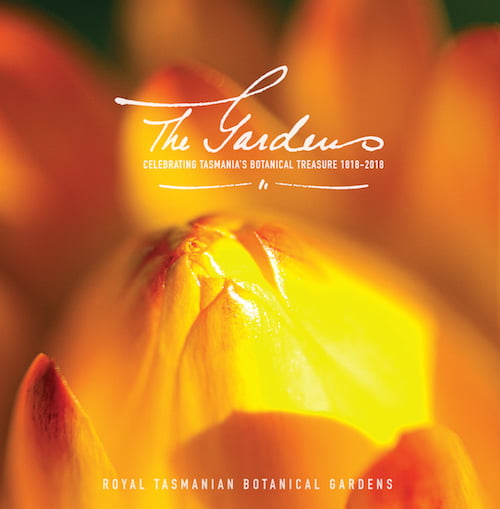The Royal Tasmanian Botanical Gardens is celebrating its 200th birthday this year with a series of events and a new publication. The Gardens: Celebrating Tasmania’s Botanical Treasure 1818-2018 has been released to celebrate the Royal Tasmanian Botanical Garden’s bicentenary this year.
It isn’t just packed with history and memories, there’s interesting garden advice there too. As I battle the influx of grasshoppers into my garden each summer I am glad to know that I am not alone – the gardeners at Hobart’s oldest garden have been there before me.
Some 160 years ago Sir John Eardley-Wilmot had a 4m-high brick wall built, which he said was to keep grasshoppers out of the Garden. I guess my metre-high dog-proof rural fence just doesn’t cut the mustard.

Friends Mixed Border. Image Natalie Tapson
Sir John Eardley-Wilmot was Lieutenant-Governor of Tasmania (then Van Diemen’s Land) from 1843-46. His excuse for the wall – which was built using unpaid convict labour rather than unemployed free men – didn’t cut it with the people of Hobart either. He was ridiculed for the expense. Despite, or perhaps because of, the ridicule and controversy, the wall is still known as the Eardley-Wilmot Wall. I am not sure if it ever kept out grasshoppers but along with the historic Arthur Wall (built in 1829) it contributes to the Garden’s microclimate that allows such a huge range of plants to grow beside the River Derwent in Australia’s second oldest botanic garden (Sydney pipped Hobart by two years).
Community involvement
As well as telling the basic history of the Royal Tasmanian Botanical Garden from its beginnings as a 15-acre garden (around 6ha) set aside to grow produce for the Governor’s table, this book focuses on the important role the Garden has played within the Tasmanian community. Last year the call went out for family photographs and memories of the RTBG. Shared memories from some 20 families have made it into the book. There are families at play on the green grass in front of the Floral Clock, wedding parties posed on the Japanese bridge (Japanese movie stars) and a youthful Peter Cundall, today so well known as long-time host of ABC TV’s Gardening Australia show, dancing with a line of happy children all dressed in Dutch costume to celebrate a tulip festival in 1992. As well we see some of the people who contributed to features in the Garden including sculptor Stephen Walker, who worked on the French Memorial Fountain in 1972.
Raising funds
The book doesn’t just celebrate the history and community role of our 200-year-old Garden. It is also looking to the future. Profits from the sale of the book are dedicated to fund the Tasmanian Seed Conservation Centre (the Seedbank).
The Seedbank holds collections of seed from Tasmania’s native plants. Its role is vital as Tasmania has a large number of native plants that grow nowhere else. The Seedbank has more than 43 million seeds kept in controlled conditions.
With some 45 per cent of the seed of our native flora reported as having “deep and complex dormancies”, there’s lots of work still required to develop successful methods for germinating these saved seeds. Seedbank staff use temperature variants, smoke and nutrients to break seed dormancies.
As well as saving seed as a resource for replanting and to aid survival of threatened species, the Seedbank also provides an important genetic resource.
“The seeds collected by today’s Tasmanians contain all sorts of genetic resources – the true value of which may not be fully appreciated until they are needed for the flourishing of future generations,” explains James Wood, Seedbank Manager, in the new book.

Book details
The Gardens: Celebrating Tasmania’s Botanical Treasure 1818-2018, is available from the RTBG online or at the Gardens Shop at Hobart for $24.95. The distinctive cover, which features a close-up of the rare native east coast paper daisy (Xerochrysum bicolor), carries the title written in a distinctive hand. It is from the pen of John Wardman, who was Superintendent from 1904 to 1932. He wrote the words “The Gardens” in flowing script c. 1914 for a guide he prepared. It’s a lovely flourish to a delightful book.
